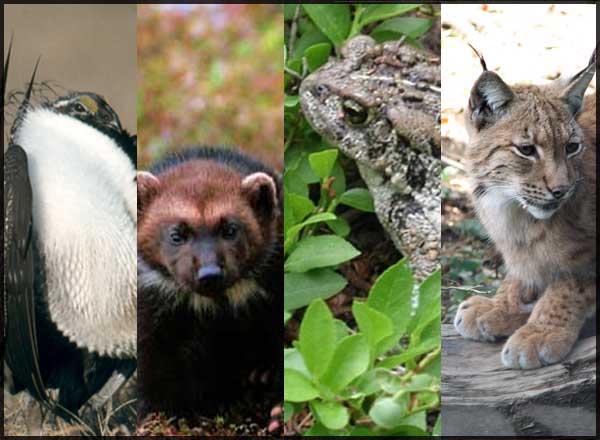
By Ruffin Prevost
CODY, WYO. — Gray wolves and grizzly bears are typically the two Yellowstone animals most people associate with endangered or threatened species. But Yellowstone and Grand Teton national parks are teeming with a diverse array of plants and animals that you may never have seen, or even heard of.
The two parks have the largest concentration of mammals in the lower 48 states. Many of these lesser-known Grand Teton and Yellowstone animals are just as interesting — and equally important to the larger ecosystem. Some of them are watched as indicators of the overall health of the parks, while others are prized for their reclusive or even ferocious natures.
Bears and wolves — along with other so-called “charismatic megafauna” such as elk, bison and deer — tend to get most of the attention from park visitors and the news media. And perhaps rightfully so. But surely even a boreal toad deserves at least one day in the spotlight each year.
So in honor of Endangered Species Day on Friday, May 18, here are four “other” fascinating and compelling Grand Teton and Yellowstone animals you might want to know more about. Though none of these animals is technically listed as endangered, they each are closely tracked by researchers for a variety of reasons.
Even if they weren’t sensitive species, wouldn’t you still love the wolverine for its ferocity, the sage grouse for its elaborate courtship displays, the Canada lynx for its air of mystery and the boreal toad for its toxic secretions? OK, maybe three out of four?
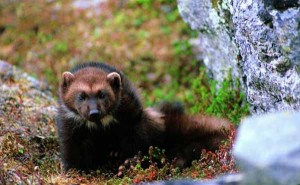
Wolverine
Known as a ferocious and elusive predator, the shaggy wolverine (Gulo gulo) is the largest member of the weasel family, and is found in alpine and coniferous forests in Yellowstone. Wolverines are among those Yellowstone animals that are active year-round, feeding on rodents, birds, eggs, whitebark pine nuts and other vegetation.
Though they are mainly scavengers during the park’s harsh winters, wolverines (which range from about 15-30 pounds) have been known to sometimes prey on Yellowstone animals as large as deer or elk, helping them earn a reputation as the pound-for-pound fiercest predator you’ll never see.
Elusive and typically solitary except when breeding, wolverines are among the most rarely seen Yellowstone animals. A 2005-09 study found them in the southeast corner of Yellowstone and in the Gallatin National Forest, north of the park.
They are even rarer in the Teton Range, where researchers recently found only two breeding female and two breeding male wolverines.
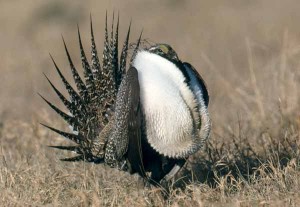
Greater sage-grouse
Sage grouse (Centrocercus urophasianus) are large, beautifully feathered birds that live among the sagebrush in wide open steppes, so they are typically not among the Yellowstone animals found at the park’s higher elevations. Instead, they are far more common in Grand Teton. They rely heavily throughout the year on sagebrush for roosting cover and food, including as a source of insects for newly hatched chicks.
Each spring, the birds engage in elaborate rituals aimed at helping them find a mate. Male sage grouse perform intricate displays known as “struts” in an attempt to attract females. The struts take place on leks, or mating grounds, and include subtle vocalizations and other highly specific behaviors. Successful males are able to mate with many females, while less dominate males typically mate with a small number of females, or none at all. So the competition is fierce in what amounts to one of Mother Nature’s intense dance contests.
Grand Teton rangers will often lead excursions in the spring to watch the birds’ courtship struts, and it is not uncommon to close trails, roads or other areas to ensure their mating can proceed undisturbed. Another management concern is the occasional collision between sage grouse and airplanes at the Jackson Hole Airport, the only U.S. airport located inside a national park.
In May 2010, the U.S. Fish and Wildlife Service found that the greater sage grouse warranted protection under the Endangered Species Act. But the agency did not formally list the sage grouse as endangered, citing other species that had more urgent need of protection. The “warranted but precluded” status means the agency will continue to closely monitor the sage grouse, whose habitat across the mountain West has been greatly fragmented by development.
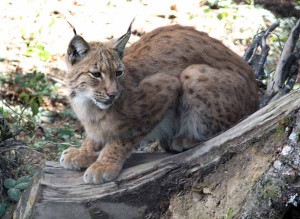
Canada lynx
The lynx (Lynx canadensis) is considered by many to be among the most secretive carnivores in the greater Yellowstone area, and it is one of the most rarely seen Yellowstone animals. Officially listed as a threatened species, researchers are not exactly sure how many lynx are in Yellowstone, although they have confirmed the animals are living and breeding in the park. Grand Teton scientists have been less successful in their efforts to document lynx there.
An adult lynx typically weighs between 15-35 pounds and measures 2-3 feet in length. Like wolverines, they have large paws that act as natural snowshoes. Lynx grow fur in and around their paw pads, also helping them more easily travel over snow.
Their long ear tufts are one of the most distinctive features among Yellowstone animals.
Lynx feed mainly on snowshoe hares in the winter, and their range typically is closely tied to an abundance of that prey animal. During the summer, lynx also eat squirrels, rabbits, rodents and other small Yellowstone animals.
The Endangered Species Act provides special protections for habitat areas where lynx are likely to be found. A four-year study completed in 2004 found lynx in the central and eastern areas of Yellowstone.
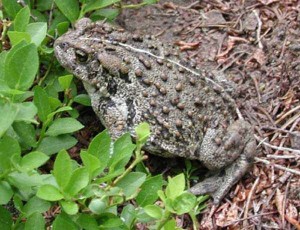
Boreal toad
The boreal toad (Bufo boreas boreas) is found in both Yellowstone and Grand Teton in relative abundance at various sites, and it is the only native toad in the parks. Despite its relatively widespread numbers, the boreal toad is among those Yellowstone animals that researchers keep a close eye on. It is listed as a sensitive species or a species of concern by various wildlife agencies.
Reports from several decades ago suggest that boreal toads were present in greater numbers then, and the animal has generally been on the decline across much of the West due to habitat loss. But their habitable spaces around Yellowstone tend to fluctuate depending on seasonal precipitation and other hydrological factors. Further study is needed to fully understand how well boreal toads are faring across the greater Yellowstone area.

Like other toads, boreal toads will secrete a defensive toxic fluid from glands behind their eyes, inflaming and irritating the mucous membranes of attacking predators, which can include ravens and other large birds, some carnivorous mammals and some snakes.
Like some other Yellowstone animals, boreal toads hibernate during the winter, typically in dry burrows. They feed on ants, moths and other insects, and sometimes small vertebrates — including smaller, younger boreal toads.
Contact Ruffin Prevost at 307-213-9818 or [email protected].

Great article! Our Wildlife and Natural Resources Initiative focuses on the research and protection of wolverines and sage grouse in Grand Teton. To learn more, visit: http://www.gtnpf.org/wildlife.php.